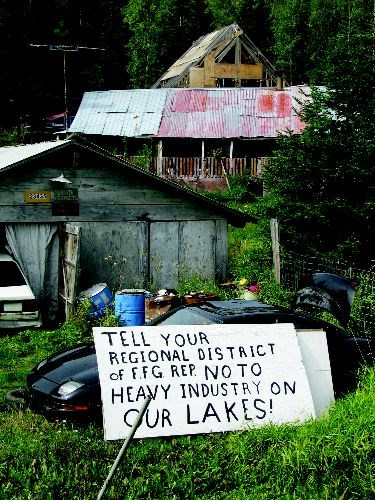The environmental assessment process on a proposed limestone quarry and lime plant in the regional district is underway.
Graymont Western Canada is looking to develop a site about 27 kilometres northeast of Prince George, in the community of Giscome.
The province's Environmental Assessment Office (EAO) began its 180-day review of Graymont's application on Monday. At the end of the review, it will provide a recommendation to the government on whether the company should be given its EAO certificate.
The Environmental Assessment Office will collect public comment on the application from Dec. 1 to Jan. 15. A public open house will be held in Prince George on
Dec. 10 from 4-8 p.m. in the Ramada's Skylight ballroom.
At full build out, the quarry would have the capacity to extract up to 1.7 million tonnes per year with a life span of 40 years.
Some area residents have expressed concerns about the size of the project, potential noise, air quality and increased traffic.
In a project description filed to the office, Graymont initially plans to quarry 600,000 tonnes per year of high-calcium limestone from a 220-hectare quarry site four kilometres southeast of Giscome.
The rock will be crushed and screened at the quarry site, before being transported by a five-kilometre, covered conveyer system to the lime processing plant 400 metres from the shore of Eaglet Lake.
The proposed plant site was previously used by CN Rail to quarry ballast rock and has an existing rail connection and gravel road access. The lime plant's footprint will be limited to previously disturbed land on the site, company officials said, which currently is a mix of gravel and scrub.
At the processing plant, the limestone will be heated to approximately 1,000 C in a vertical kiln and converted into lime (calcium carbonate), a chemical used in a wide variety of industries including construction, steel manufacturing, water treatment, pulp and paper, mining and for removing sulfur dioxide from smokestack emissions.
The initial construction is expected to employ 40 to 60 people, and the project is expected to create 10 to 15 permanent, full-time jobs.
According to the project description, the plant is expected to run 24 hours a day, seven days a week, 365 days a year. The kilns will burn coal, or potentially natural gas or wood biofuel, according to the report. However, the project description said, natural gas lines were currently unavailable at the location.
Graymont estimated that if 100 per cent coal fuel is used for the kilns, the quarry and lime plant operations will produce the equivalent of 716,898 tons of carbon dioxide per year -enough to increase B.C.'s total greenhouse gas emissions by 1.19 per cent, based on 2012 emission levels.
In it's submission, Graymont reported that burning 100 per cent natural gas would cut greenhouse gas emissions by 14 per cent, and the use of 100 per biofuel would cut greenhouse gas emissions by 30 per cent.
In its report, Graymont said the project is expected to "cause an increase in air contaminant concentrations."
"For all air contaminants except for PM10, emissions associated with the project are predicted to be below the BC Air Quality Objectives and World Health Organization guidelines. PM10 modelled results indicated potential exceedances of the objectives, of limited magnitude and within a limited area, immediately surrounding the quarry which the public is not expected to access," the report says. "Fugitive dust mitigation measures will be implemented to ensure the impact of PM10 emissions during operations does not exceed BC Ambient Air Quality Objectives."
For an electronic copy of the application and to submit comment, go to eao.gov.bc.ca.
-- with files from Arthur Williams



